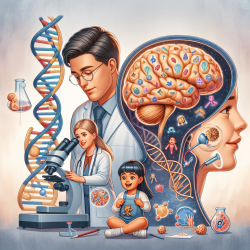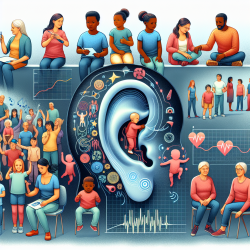Embracing Genetic Insights for Enhanced Therapeutic Outcomes
In the realm of speech-language pathology, the integration of genetic research into therapeutic practices is not just a possibility—it's a necessity for achieving superior outcomes. The recent study titled Symmetrical Corticobasal Syndrome Caused by a Novel c.314dup Progranulin Mutation presents groundbreaking insights that can significantly enhance our understanding and approach to complex neurological conditions.
Understanding Corticobasal Syndrome (CBS)
Corticobasal Syndrome (CBS) is characterized by progressive asymmetric rigidity and apraxia, along with cortical and extrapyramidal dysfunctions. This includes symptoms like alien limb phenomenon, myoclonus, and bradykinesia, often unresponsive to dopaminergic treatment. While corticobasal degeneration is a frequent underlying pathology, CBS can also be associated with frontotemporal lobar degeneration (FTLD), Alzheimer's disease, and other conditions.
Significance of the Study
The study highlights a novel progranulin (GRN) mutation in a patient with atypical CBS presentation. Despite the absence of a positive family history, the patient exhibited symmetrical neuroimaging findings, suggesting that GRN mutations could be a critical factor in CBS associated with FTLD-TDP type 3 pathology. This discovery underscores the importance of considering genetic screening for GRN mutations in CBS patients, even when family history does not suggest a hereditary component.
Implications for Practitioners
For practitioners, this research offers several key takeaways:
- Genetic Screening: Consider genetic screening for GRN mutations in CBS patients, especially when clinical presentations are atypical or when family history is negative. This proactive approach can lead to more accurate diagnoses and tailored interventions.
- Holistic Assessment: Incorporate comprehensive neuropsychological assessments and neuroimaging in evaluating patients with suspected CBS. Understanding the full scope of symptoms and their progression is crucial for effective management.
- Interdisciplinary Collaboration: Work closely with geneticists and neurologists to interpret genetic findings and integrate them into therapeutic strategies. This collaboration can enhance the precision of treatment plans.
Encouraging Further Research
The findings from this study not only inform current practice but also pave the way for future research. Practitioners are encouraged to explore the following areas:
- Longitudinal Studies: Conduct long-term studies to observe the progression of CBS in patients with GRN mutations and the efficacy of various interventions.
- Genetic Counseling: Investigate the role of genetic counseling in managing expectations and planning for patients and their families.
- Therapeutic Innovations: Explore novel therapeutic approaches that address the specific genetic and neuropsychological profiles of CBS patients.
By integrating genetic insights into practice, we can enhance our understanding of complex conditions like CBS and improve therapeutic outcomes for children and adults alike. The journey towards better outcomes begins with embracing the potential of genetic research.
To read the original research paper, please follow this link: Symmetrical Corticobasal Syndrome Caused by a Novel c.314dup Progranulin Mutation.










